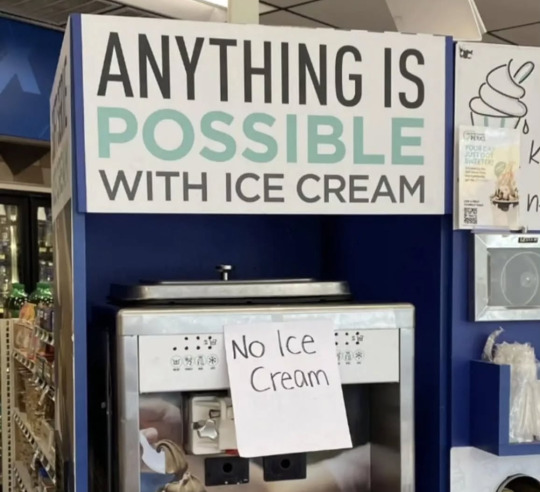Chronic illness + mental health MSW student + writer Fandom blog: whatwould-misha-do
Last active 2 hours ago
Don't wanna be here? Send us removal request.
Text
I love Stardew Valley, it's such a comfortable game to play, but the plot feels a little light at times. I bet it would be more compelling if the farmer had amnesia, crippling substance dependence and was suffering so much mental degradation that he thought his clothes were speaking to him.
#I know we are dragging things for the meme#but I would play all of these suggested nonsensical games for at least 5 minutes#I love genre mashups
6K notes
·
View notes
Text

i will not be having an ipad baby. i will be having a Pea baby
33K notes
·
View notes
Text

this is from a "manipulation advice" video and it's just so fucking funny to me. why didn't I think of responding to insults like this
100K notes
·
View notes
Text
Me for the last 15 years: Starting a timer when you have to wait for something or stand in line can be helpful, because no matter how impatient you feel you can check the timer and remind yourself it has not been several eternities and has in fact only been five minutes.
Me setting a timer when I got to bag claim just now: I'm so clever! I will now be reminded that it's only been five minutes and bag claim usually takes about twenty!
Me looking at the timer thoughtfully: ...another Very Neurotypical Moment With Sam, it appears.
19K notes
·
View notes
Text
The most dramatic moment during my Camp Counseling career at an all girls camp was when a girl got a letter from a friend saying that Zac Efron had died and one of her bunkmates ran out of the cabin and shouted “ZAC EFRON IS DEAD!!!!!” and the camp immediately fell into chaos girls were crying in the middle of camp and running around spreading the news everyone was yelling and the counselors had to look up wether or not Zac Efron was dead (this is a wireless camp so the girls couldn’t access the internet and check for themselves) and then get out a megaphone and be like “ZAC EFRON IS NOT DEAD PLEASE REMAIN CALM” outside of all the cabins it was insanity.
187K notes
·
View notes
Photo

Mother and child training longsword in Chile, at the Centro Esgrima Histórica
33K notes
·
View notes
Text
lake wants to kill and gnash and gnash my bones I think
8K notes
·
View notes
Text
So, reports of an unprecedented egg “shortage” are exaggerated. Nonetheless, egg prices — and egg company profits — have gone through the roof. Cal-Maine Foods — the largest egg producer and the only one that publishes its financial data as a publicly traded company — has been making more money than ever. It’s annual gross profits in the past three years have floated between 3 and 6 times what it used to earn before the avian flu epidemic started — breaking $1 billion for the first time in the company’s history. All of this extra profit is coming from higher selling prices, which have been earning Cal-Maine unprecedented 50-170 percent margins over farm production costs per dozen. Taking Cal-Maine as the “bellwether” for the industry’s largest firms — as people in the egg business do — we can be pretty confident that the other large egg producers are also raking in profits off the relatively small dip in egg production.
High persistent profits are an anomaly for the industry. Historically, egg producers have responded to avian flu epidemics—and the temporary rise in egg prices that often accompanies them—by quickly rebuilding and expanding their flocks of egg-laying hens. “Fowl plagues”—as these epidemics used to be called—have been with us since at least the 19th century. Most recently, large-scale avian flu epidemics hit egg farms in 2015 and 1983-1984. The egg industry responded to both of these destructive events by sprinting to rebuild and expand the egg-laying hen flock — something which checked price increases and ultimately made sure prices went back to pre-epidemic levels within a reasonable time.
As Cal-Maine Foods explained in its 2007 Annual Report: “In the past, during periods of high profitability, shell egg producers have tended to increase the number of layers in production with a resulting increase in the supply of shell eggs, which generally has caused a drop in shell egg prices until supply and demand return to balance.”
This time around, however, that’s not happening. Despite high profits, the egg industry has somehow maintained a stubborn deficit in egg production capacity. Hatcheries — the firms that supply hens to egg producers — have throttled the pipeline of hens instead of expanding it. According to the Egg Industry Center, the size of the flock of “parent” hens — the hens used by hatcheries to produce layer chicks for egg producers — plummeted from 3.1 million hens in 2021, to 2.9 million in 2022, to 2.5 million hens in 2023 and 2024.
Meanwhile, hatcheries have been hatching significantly fewer parent chicks to replace aging ones — nearly 380,000 (or 12 percent) fewer in 2022 compared to the year before, and even fewer parent chicks in 2023 and 2024 — leaving the parent flock older and more likely to produce eggs that fail to hatch. That could explain why, although hatcheries reported producing 125-200 million more fertilized eggs to the USDA in each of the last three years compared to 2021, the number of eggs they’ve placed in incubators and the number of chicks they’ve hatched from those eggs has either declined or stayed basically steady with 2021 levels in every year since.
As for egg producers themselves, you may be surprised to learn that they have added between 5 and 20 million fewer pullets to their farms in every one of the last three years than they did in 2021. As the USDA observed with some astonishment at the end of 2022, “producers—despite the record-high wholesale price [of eggs]—are taking a cautious approach to expanding production[.]” The following month, it pared down its table-egg production forecast for the entirety of 2023 on account of “the industry’s [persisting] cautious approach to expanding production.”
In other words, the only thing that the egg industry seems to have expanded in response to the avian flu epidemic is windfall profits — which have likely amounted to more than $15 billion since the epidemic began (judging by the increase in the value of annual egg production since 2022), and appear to have been spent primarily on stock buybacks, dividends, and acquisitions of rivals instead of rebuilding and expanding flocks. When an industry starts profiting more from *not* producing than from producing, it’s a sign that something isn’t right. It could be an innocent bottleneck. But when it lasts for three years on end with no relief in sight, it's usually a sign of something else that’s pervasive in America — monopolization.
As the coming installments in this series will detail, the fundamental problem in the egg supply chain today is the simple fact that every industry involved in turning an egg into a chicken and turning a chicken into an egg—from the breeders and hatcheries that create the hens to the producers who use the hens to make eggs—has been hijacked by one or two financier-backed corporations, with the incentives flipped from competing entities seeking to produce more eggs to an oligopoly trying to restrain the production of eggs.
On one end of the egg supply chain, you have two companies who control chicken genetics, the billionaire-owned Erich Wesjohann Group and the private-equity-backed Hendrix Genetics. Headquartered a short car trip apart in Cuxhaven, Germany, and Boxmeer, Netherlands, these private firms have systematically gained control over the supply of egg-laying hens to American producers over the past two decades by buying out or suppressing rivals and challengers. Today, no egg producer in this country can expand the number of hens in its flock — or even replace the hens it already has when they age out or die — without the cooperation of this duopoly. And, since the value of hens rises with the price of the eggs, when the price of eggs is high these two barons have a clear interest in keeping the supply of pullets to producers on a tight leash — so the high prices stick.
On the other end of the egg supply chain, you have the largest egg producer in the country and the world, Cal-Maine Foods.
Matt Stoller from his monopolisation/cartel report; something that has clicked recently is the way that business seeks to maximise profit margin over volume, which often leads to reducing production, brittle supply chains, high prices, and ultimately shortages.
in principle this isn't supposed to happen under capitalism, because someone earning high profit margins should be outcompeted by new entrants willing to earn slightly lower profit margins, until (in the perfect frictionless market) the rate of profit should be whittled down to the rate of risk free return (government interest rates?) plus epsilon (a little bit).
obviously this does happen in reality for a number of reasons, and the Problem of Profits is a fun question to dig into, but the problem of persistently high profits is a more concerning issue and appears to be growing across multiple industries.
antitrust law is supposed to prevent market concentration that leads to this outcome but has been toothless since the '90s, allowing dramatic consolidation across dozens of old industries (groceries, agriculture, pharmacies, television, newspapers) and of course new industries (tech giants).
government regulation often ends up favouring incumbents, but it seems that contractual arrangements between suppliers and industry bodies and buying agents to form tight cartels are a bigger problem: if egg prices are high you might think to start an egg farm, but you need to find someone who will sell you chickens and someone who will buy your eggs, when the industry is using every means at their disposal to cut off market access to new entrants.
and of course if you have access to the gargantuan amount of capital required to attempt a serious challenge to an established cartel, why exactly would you want to start a price war with them when you can instead find some other unprotected industry to buy up and establish a cartel of your own?
capitalism seems to have entered a phase of its development equivalent to WWI, where defensive operations by incumbents are more successful than offense by new ventures, keeping the battle lines frozen in place (presumably the soldiers dying in their millions would be workers and consumers in this analogy).
4K notes
·
View notes
Text
This scientist crafts stunning visual art through chemistry.
22K notes
·
View notes
















